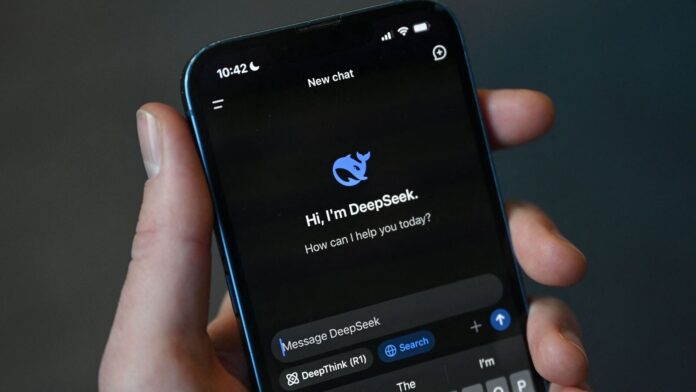For many, AI’s promises of transformation have yet to materialize meaningfully. A machine-generated summary of a Google search or an AI-suggested comment on social media isn’t a revolution. But that may soon change. The defining shift in AI during 2025 won’t just be about bigger or better models, but about making them truly useful in everyday life.
When ChatGPT first appeared, much initial innovation comprised ‘AI wrappers,’ or apps plugged into large language models (LLMs) without adding much unique functionality. Then a countertrend emerged, with startups focusing on deeply integrating AI into applications, from coding assistants to content-creation tools.
As I see it, the AI market will now undergo a transition like the one smartphones underwent, moving from basic add-ons to fully embedded AI-first applications. Remember, the smartphone wasn’t defined by a single invention, but by an ecosystem of products that emerged around it.
DeepSeek’s models could be the foundation for this next phase. Its release of R1 was significant not just because it matched top-tier AI models in capability, but because it was developed at a fraction of the usual cost and released for free, much like apps like Uber and others became fundamental to the smartphone ecosystem rather than standalone services. In other words, these apps went beyond being ‘wrappers.’
Also Read: The Paris AI Action Summit could help India raise its game in this vital field
To understand why R1 is so significant, it may help to look at how AI models are built.
Training a language model involves two key phases: pre-training and post-training. The former is when an AI model absorbs vast amounts of publicly available text and learns to generate human-like responses. This process results in a base model that possesses broad knowledge but lacks fine-tuning. It is also computationally expensive and requires enormous processing power, so it has so far been dominated by well-funded companies such as OpenAI and Google DeepMind.
The post-training phase refines the model’s responses, making them more accurate and useful. Supervised fine-tuning involves human trainers creating question-answer pairs to help the model recognize good responses. OpenAI also pioneered reinforcement learning with human feedback (RLHF), where human reviewers score AI-generated responses for further refinement. These approaches are effective but costly, as they take a lot of human labour.
DeepSeek’s breakthrough was its elimination of human involvement in post-training. It also predicted entire phrases rather than going along a word at a time, like older LLMs did. Instead of relying on human evaluators to rate AI-generated responses, R1 uses an automated system in which a computer assigns scores. This significantly reduces costs while maintaining high accuracy—at least in objective domains such as mathematics and programming. The trade-off is that while this method works well for logical reasoning, it struggles with open-ended, subjective or context-heavy questions.
Also Read: Jaspreet Bindra: The K-shaped trajectory of AI offers India a big opportunity
Beyond its novel training approach, DeepSeek also scored big on hardware efficiency. While most AI developers rely on the latest Nvidia GPUs to maximize performance, DeepSeek optimized older computing infrastructure to train R1 without cutting-edge chips. Instead of using Nvidia’s CUDA software, the industry standard, it took the more complex approach of programming in assembly language, allowing its models to interact directly with hardware. This spelt high efficiency, reducing dependence on chips that US sanctions have made difficult for Chinese companies to acquire.
The timing of R1’s arrival was especially noteworthy. Almost immediately, other AI majors introduced advanced reasoning models, including OpenAI’s o1 and o3 and Google DeepMind’s Gemini 2.0 Flash Thinking. Rapid releases suggest these companies had similar models but hesitated to release them, possibly to protect their premium offerings. DeepSeek’s free R1 forced their hand, accelerating the rivalry.
Suppose reasoning-based AI models are indeed easier and cheaper to build than once believed. In that case, the availability of high-performance AI in the public domain, built on the larger, older and expensively pre-trained LLMs may grow exponentially, reducing barriers to entry and increasing competition vastly.
DeepSeek and its new rivals are well placed to lead this transition. If they continue refining and integrating their models into various applications, they could form the infrastructure that powers countless AI-driven tools. AI has already made major inroads into software development, putting Indian businesses at risk. Yet, there is still no truly seamless AI-first platform that integrates various industries and workflows. Firms that create such a platform will likely define the next era of AI.
Also Read: The West should act quickly and decisively to tackle the AI crisis it faces
Base models could become high-priced commodities. This raises the possibility that AI will follow the smartphone path—with an advanced AI base model built into a physical product and companies charging a premium for the hardware, while software apps are widely accessible. This would mark a big shift from today’s AI landscape, where AI models are primarily standalone tools, in favour of a future where AI is part of our daily digital interactions.
The story of 2025 may not revolve around a single breakthrough, but the emergence of AI as a fundamental layer of digital infrastructure, driving countless new applications and shaping the next era of technology.
The author is co-founder of Siana Capital, a venture fund manager.
#DeepSeeks #superapps
